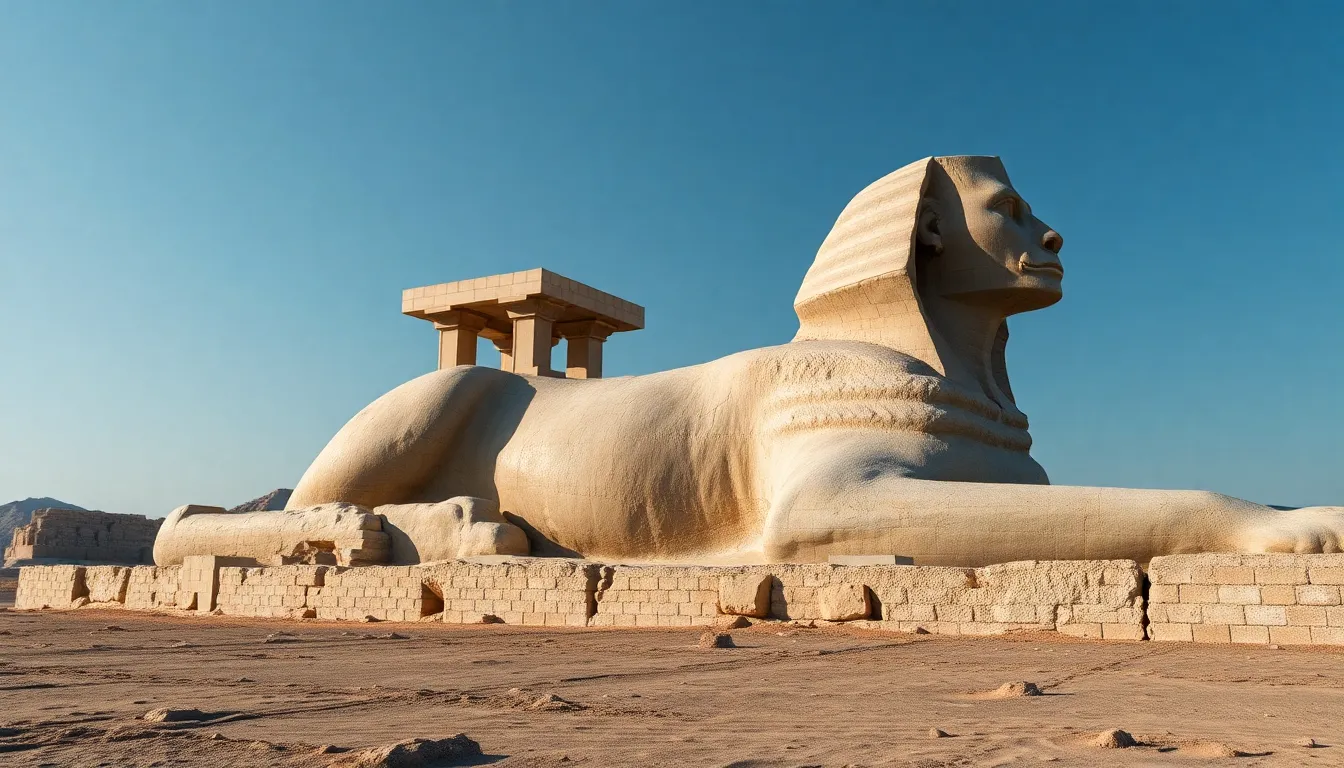The Riddle of the Sphinx: Analyzing Its Structure and Meaning
I. Introduction
The Sphinx, a creature with the body of a lion and the head of a human, is one of the most iconic figures in both Egyptian and Greek mythology. Its historical significance stretches across cultures, symbolizing mystery and enigma. The Sphinx is perhaps best known for its riddle, a challenge posed to travelers: What walks on four legs in the morning, two legs at noon, and three legs in the evening? This riddle has captivated audiences for centuries, prompting discussions about its deeper meanings and implications.
This article aims to analyze the structure and meaning of the riddle of the Sphinx, exploring its historical context, the phases of life it represents, and its broader implications in mythology and philosophy.
II. Historical Context of the Sphinx
The Sphinx has roots in both ancient Egypt and Greece, with varying interpretations and significance in each culture. In Egypt, the Sphinx was often seen as a guardian, a symbol of strength and wisdom, associated with the pharaohs and the protection of sacred sites. In Greek mythology, the Sphinx became intertwined with the tragic tale of Oedipus, symbolizing a challenge that must be overcome to achieve knowledge and clarity.
In the Oedipus myth, the Sphinx poses her riddle to travelers, devouring those who fail to answer correctly. This role highlights the Sphinx’s dual nature as both a protector and a destroyer, emphasizing the importance of wisdom and intellect in human existence.
Riddles held significant cultural value in ancient societies, serving not only as entertainment but also as a means to convey deeper truths and challenge the intellect. The riddle of the Sphinx exemplifies this tradition, inviting contemplation and analysis.
III. Structure of the Riddle
The riddle’s phrasing and imagery are crucial to its impact. It utilizes a simple yet profound structure that invites the listener to think critically about the clues provided. The elements of time—morning, noon, and evening—are central to its meaning, representing different stages of life.
Metaphor and symbolism play significant roles in riddles. The four legs, two legs, and three legs are not merely literal descriptions; they evoke deeper reflections on the human experience. Rhetorical devices such as analogy and personification are employed, making the riddle a rich text for interpretation.
IV. The Phases of Life: Analyzing the Clues
Each part of the riddle corresponds to a distinct phase of human life:
- Morning: This represents infancy, where a child crawls on all fours.
- Noon: Symbolizing adulthood, this phase is characterized by walking upright, embodying strength and independence.
- Evening: Reflecting old age, this phase often involves the use of a cane, symbolizing the frailty and wisdom that come with years of experience.
These stages not only illustrate the physical changes humans undergo but also invite philosophical inquiries into the nature of existence and the passage of time.
V. Interpretations of the Riddle
The riddle has been subject to various interpretations throughout history:
- Traditional Interpretations: The most common interpretation sees the answer as man, representing the journey through life.
- Alternative Interpretations: Some view the riddle as a commentary on the human condition, exploring themes of vulnerability and resilience.
- Psychological Analysis: From a psychological perspective, the riddle challenges individuals to confront their mortality and the inevitability of aging.
Each interpretation reveals layers of meaning, prompting deeper contemplation about life and existence.
VI. The Riddle’s Role in the Oedipus Myth
Oedipus’s encounter with the Sphinx is a pivotal moment in his journey. When he arrives at Thebes, he is confronted by the Sphinx and must solve her riddle to save the city. His successful answer not only frees the people from her grasp but also marks the beginning of Oedipus’s rise to power.
The significance of solving the riddle extends beyond mere victory; it represents Oedipus’s quest for knowledge and truth, setting in motion a tragic fate that intertwines with the themes of destiny and self-discovery.
However, the resolution of the riddle also foreshadows the tragic consequences of Oedipus’s actions, emphasizing the complexity of knowledge and the burdens it can carry.
VII. The Sphinx as a Symbol
The Sphinx serves as a powerful symbol in mythology:
- Knowledge and Truth: The Sphinx represents the pursuit of knowledge and the challenges that accompany it.
- Protector and Destroyer: This duality highlights the balance between wisdom and ignorance, where the quest for truth can lead to both enlightenment and destruction.
- Existential Questions: The riddle poses fundamental questions about the nature of existence, identity, and the passage of time.
These symbolic layers contribute to the Sphinx’s enduring legacy as a figure of mystery and depth.
VIII. Conclusion
In summary, the analysis of the riddle of the Sphinx reveals rich insights into human existence, the passage of time, and the pursuit of knowledge. From its historical roots in ancient mythology to its implications in literature and philosophy, the riddle continues to resonate with contemporary audiences.
The legacy of the riddle serves as a reminder of the complexities of life and the importance of seeking understanding. In a world filled with uncertainties, the riddle of the Sphinx remains a timeless challenge, inviting us to explore the depths of our own experiences and the truths that lie within.




